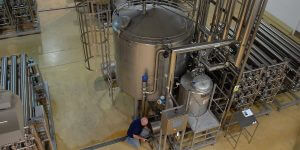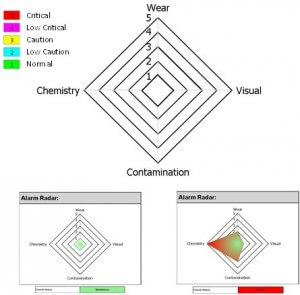Oil Analysis – Should It Form Part of Your Condition Monitoring Programme?
History
The sampling and analysing of lubricating oils dates back more than 70 years when it was first used in the railway industry to detect deterioration in the quality of the lubrication in trains and locomotives. Since that time it has been used in many applications both in civilian and military and latterly as part of Condition Monitoring Programs and trending of such equipment as industrial gearboxes, pump chambers, engines, compressors, industrial clutches, switchgear etc.
A detailed analysis of a sample of lubricating oil can be a valuable preventative maintenance tool. In many cases it enables identification of potential problems before catastrophic failures or major repairs becomes necessary. It can:
- Increase the Life Cycle of the machine
- Reduce catastrophic failures
- Reduce downtime in production to allow planned outages
- Reduce the cost of repairs which result from secondary damage caused when machines ‘run to fail’.
Uses in rotating machine applications
All rotating machinery components will wear with use. Contact and fatigue will produce a continuous stream of microscopic metallic particles which suspend in the lubricant. It is the concentration, size, rate and composition of these partials which provide indications of increased wear rates which could develop into failures.
Taking samples of the lubricant, in most instances while the machine is in operation, can be performed on a regular basis and can help indicate when abnormal wear or contamination is occurring. The oil becomes a working history of the machine.
Particles caused by normal wear and operation will mix with the oil. Any externally caused contamination also enters the oil. By identifying and measuring these impurities, you can calculate the rate of wear of the components.
An oil analysis also will suggest methods to reduce accelerated wear and contamination. A typical oil analysis identifies the presence of various materials by knowing the base materials from which the components are manufactured it can be determined which parts are wearing quicker than others. It also allows you to investigate that the appropriate lubricants are being used.
What Oil Analysis can detect
- Dirt contamination in the oil
- Excessive component wear
- Unsuitable lubricants
- Excessive temperatures

Fig1. Oil samples being taken on site
Some wear is normal, but abnormal levels of a particular material can give an early warning of impending problems and possibly prevent a major breakdown.
Early detection of wear or contamination can also allow corrective action to be taken before major damage occurs. Probably one of the major advantages of an oil analysis program is being able to anticipate problems and schedule repair work to avoid downtime during a critical times.
One purpose is to provide a means of predicting possible impending failure without dismantling the equipment. A person can “look inside” a gearbox, pump, engine transmission or hydraulic system without taking it apart. Over a number of years the life expectancy of the equipment can be calculated by trending the results of the samples coupled with the periodic overhauls where visual inspection is possible.

Fig 2. An example an oil analysis report
Other Uses
Oil sampling of pump chambers can detect ingress of fluids indicating the mechanical seal is allowing water or other fluids into the oil. In transformers and switchgear oil analysis can help to determine potential problems with the quality of the oil, giving advance warning of insulation degradation or overheating.
CPM use oil analysis as part of its CBM and LCM programs where a level of understanding of what is happening inside a motor, pump, gearbox, and transformer is important without the need to take the equipment out of service. It has resulted in extending the life of the equipment, reducing unscheduled production downtime and in turn reduced the cost of the repairs budget.
For further information, contact Charles McAllister at info@cpm-uk.com or call 0161 865 6161.
